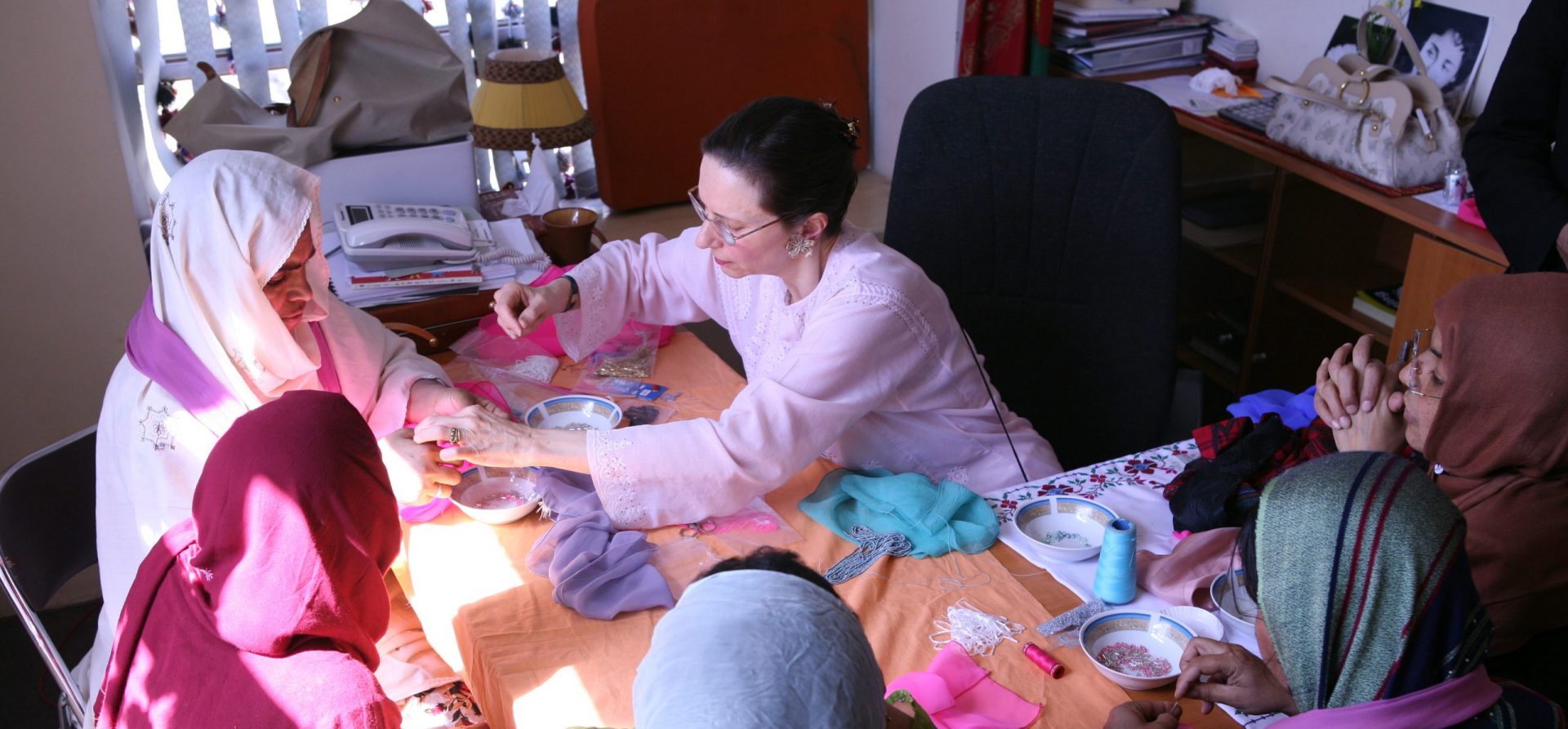Hindu, India
P. ANIMA
Sunday, Dec 23, 2007
In embattled Afghanistan, designers are using fashion and design to empower women economically, to keep alive the traditions of a rich culture.
Mina Sherzoy knows Afghanistan is an ongoing battle. Time had stood still here for nearly 30 years. Its people are waking up from forced slumber to realise the world has left them behind. So, when designer Sherzoy sat back to watch the rehearsals of the SAARC Fashion Show-2008 in New Delhi — a novel attempt by the Ministry of External Affairs and Indian Council for Cultural relations — she knew she carried with her a different reality: one of war, poverty, hunger and suppression.
Not a priority
This representative from Afghanistan for the SAARC Fashion Show knows fashion and fashion shows are not really the priority in her country. “Everyone just wants to bring bread to the table,” confesses Sherzoy. But, fashion has acquired a new meaning in the hands of this pioneering woman. Fashion is not statement-making for her. Neither is it frivolous or elitist. It is a way of teaching scores of women and families to live again, of nursing people back to work and work culture, and, more importantly, making women economically empowered.
Sherzoy is the president of the Afghanistan World Wide Shopping Online Mall. She works with women artisans to stroke back to life the handicraft and textile wealth of this war-ravaged country. She left the country during war and returned to Kabul after the turn of the millennium.
“Kabul had changed, the promises had changed,” Sherzoy is cryptic of the devastation she returned to. “Everything is a challenge and involves risk, even starting a business. It would take us another 30 years to reach the pre-war situation,” she says.
Sherzoy engages with women to design and make garments in her boutique in Kabul.
“I was lucky to leave during the war. If I hadn’t, I would be one of them,” says Sherzoy alluding to the Afghani women who have hardly known freedom. “When I returned from the United States after 23 years, post-Taliban, I searched for women artisans, but it was difficult to find them. That’s when I started a non-governmental organization for widows and victims of war. Now, about 6,000 people learn tailoring, computer and basic business skills,” recounts Sherzoy.
The women know the concerns in their country are basic. Infrastructure, electricity, education and funding are the issues along with dealing with people’s fear. But Sherzoy is determined, especially as her country is grappling with an identity crisis. Traditional Afghani embellishments like coins and button find an appearance in her clothes.
Sherzoy emphasizes the higher role of fashion in modern Afghanistan. “Before the war, the latest fashion from Paris, New York, and London was found in Kabul. We had fashion 30 years ago, but it has not been updated. Fashion is not much of a priority, but it is a medium for economic empowerment. Now, fashion, culture and history go together,” explains Sherzoy.
A tough task ahead
As Sherzoy attempts to revive the age-old handicrafts, embroidery and fabrics and give them a modern makeover, she agrees there are many moulds to be broken. “I brought five people with me to Delhi. They have never seen a fashion show in their life. We have beautiful girls in Afghanistan. But for them to feel confident and secure to come on the ramp is difficult. There is still a lot of fear in the families,” Sherzoy draws attention to why fashion is almost non-existent in her country — there are hardly any models or fashion shows.
But the unique reality of her home is reflected well in the works of Sherzoy. There was no exposure for models. But the make-over burqas, embroidery, dark tights, stoles, and cleaner, simpler clothes spoke a new fashion language.
